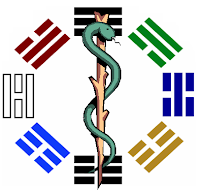Epstein-Barr Virus
Epstein–Barr virus (EBV), is one of the most common human viruses. In the U.S. as many as 5% of adults between the ages of 35 of 40 have been infected. Many children become infected but these infections usually cause no symptoms or cause symptoms indistinguishable from other brief viral illnesses. In adolescence and in young adults the virus usually causes mononucleosis. This gives symptoms such as fever, sore throat, and swollen lymph nodes. Mostly the symptoms disappear within two months but the virus can remain dormant for the rest of one’s life. Occasionally the virus could be reactivated but not necessarily with symptoms.
EBV may play an important role in the development of some significant malignancies namely Burkitt’s lymphoma and nasopharyngeal carcinoma. Recent studies show that this family of viruses (retroviruses) may be implicated in the development of breast cancer and prostatic cancer.
Transmission of the virus usually requires intimate contact with the saliva of an infected person. Many healthy individuals may carry and spread the virus. In traditional medicine there is no specific treatment for mononucleosis or EBV virus other than treating the symptoms. Steroids and some anti-viral medications are prescribed to influence the course of the disease. When symptoms last 6 months or more, a thorough investigation is needed to see if the patient’s symptoms fit the criteria for chronic fatigue syndrome.
Moderate to high-levels of antibodies can be detected in the first month of the illness. These levels then decrease rapidly after week four. False positive results may be found in some patients and false negative results may be obtained in 10 percent to 15 percent of patients particularly in children.
Scientific research is looking into a link between mononucleosis and the increased risk of developing multiple sclerosis.
Cytomegalic Virus (CMV)
The cytomegalic virus can cause miscarriage, mental retardation, progressive hearing impairment, jaundice, respiratory illness, intrauterine growth abnormalities, failure of growth in infants and children, and eye infections.
This virus is the most common cause of congenital viral infection in the U.S with an approximately 0.2 %- 2.2 % of all live born infants acquiring the virus. It is estimated the 90 percent of infected newborns do not develop any symptoms at birth, with many subsequently showing some form of impairment; such as hearing impairment, mental retardation or delayed psychomotor developments.
Human Papillomavirus (HPV)
The human papillomavirus causes genital warts (condylomata). The warts usually develop in moist areas such as the genitalia and the anus. This virus is highly transmittable and through sexual contact. In women in the
cervix is usually infected with a possible increased risk for cervical cancer. Pregnancy and a weakened immune system usually make women more susceptible to the virus.
Herpes simplex virus type- 2 and occasionally type-1 can cause genital herpes. Intimate sexual relationship usually transmit infection to the partner. The herpes virus can also affect other parts of the body including the eyes. Genital herpes virus causes tender, red blisters that break resulting in painful ulcers in both men and women. The virus may also infect the cervix in women and the urethra in men with no visible lesions. In the acute stages of the disease lymph nodes in the groin area may become enlarged and painful.
Complementary Medicine
Conventional medicine offers symptomatic treatment, while antiviral medications offer a limited efficacy and possible side effects.
Alternative and complementary medicine when added to conventional treatment is believed to help boost the outcome. Alternative and complementary medicine may help support the immune system. This would give the body the best possible chance to fight the invading viruses.
The abilities of various alternative techniques to possibly strengthen the immune system is supported by some scientific studies. Acupuncture tends to balance the energetic activities of the different meridians which may strengthen the body’s ability to a fight the invading viruses.
Both homeopathy and acupuncture are believed to boost the innate defensive mechanisms of the body. It is believed that both can help the body create a hostile environment or the invading viruses.
